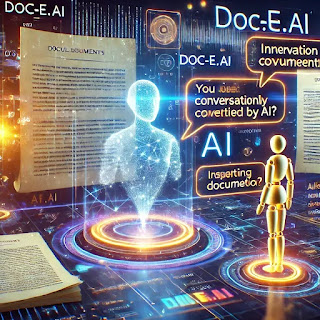Unlocking the Power of Conversation: LLMs and the Future of Document Interaction
In today’s fast-paced digital landscape, interacting with documents has become a vital part of both personal and professional life. Whether you're sifting through legal contracts, analyzing research papers, or navigating complex user manuals, traditional document interaction often feels tedious and time-consuming. Enter Large Language Models (LLMs) like ChatGPT, which are revolutionizing how we engage with information by making document interaction more intuitive and conversational.
The Shift from Static to Conversational Document Interaction
Historically, document interaction involved linear navigation—scrolling through pages, using search functions, or relying on keyword matches. This method often leads to frustration as users struggle to find the specific information they need. LLMs are changing this paradigm by enabling conversational access to documents. Instead of searching for answers manually, users can simply ask questions and receive context-aware responses.
How LLMs Transform Document Interaction
Natural Language Queries: LLMs allow users to pose questions in plain language. For instance, instead of searching for "Section 4.2 warranty terms," you can ask, "What are the warranty terms in this contract?" The model understands the context and provides precise answers.
Context-Aware Responses: Unlike simple search functions, LLMs consider the entire document's context. They can synthesize information from multiple sections to provide comprehensive answers.
Summarization: When dealing with lengthy documents, LLMs can generate concise summaries, helping users grasp key points quickly without reading every page.
Document Comparison: LLMs can assist in comparing multiple documents by highlighting differences and similarities, saving time in tasks like contract reviews or policy analysis.
Enhanced Accessibility: Conversational document interaction makes information more accessible to users who may not have domain-specific knowledge, leveling the playing field for decision-making.
Real-World Applications
Legal and Compliance: Lawyers and compliance officers can quickly find specific clauses in contracts or regulatory documents.
Customer Support: Support agents can access relevant product documentation more efficiently, improving response times and accuracy.
Research and Academia: Researchers can interact with scientific papers, extracting key insights without reading every detail.
Product Documentation: Developers and users can navigate technical manuals more easily, enhancing user experience.
Overcoming Challenges
While LLMs offer immense potential, there are challenges to address:
Data Privacy: Ensuring sensitive documents remain secure when processed by LLMs.
Accuracy: Mitigating the risk of generating incorrect or misleading information.
Model Training: Continuously improving models to understand domain-specific terminology and nuances.
The Future of Conversational Documents
As LLM technology advances, we can expect even more sophisticated document interaction capabilities. Integration with voice interfaces, multilingual support, and personalized recommendations are just a few possibilities on the horizon.
Imagine a future where interacting with complex documents is as simple as having a conversation—a future where information flows seamlessly, empowering users to make faster, more informed decisions.
Final Thoughts
The power of conversation, unlocked by LLMs like ChatGPT, is transforming how we interact with documents. By making information access more intuitive and efficient, these technologies are reshaping the way we work, learn, and communicate.
Explore how Doc-E.ai can help your business unlock the power of conversational document interaction, turning complex information into actionable insights.
The power of conversation, unlocked by LLMs like ChatGPT, is transforming how we interact with documents. By making information access more intuitive and efficient, these technologies are reshaping the way we work, learn, and communicate.
Are you ready to unlock the potential of conversational document interaction?

.jpg)

Comments
Post a Comment